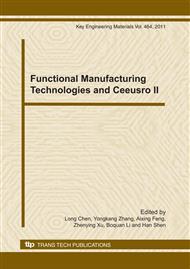p.548
p.552
p.556
p.560
p.564
p.568
p.572
p.576
p.583
Research on Constructing Surrogate Model of Coronary Stent Mechanical Property
Abstract:
Coronary stents are small tube-like structures expanded into stenotic arteries to restore blood flow perfusion to the downstream tissues. In this paper, based on the finite element analysis (FEA), both the response surface model (RSM) and radial basis function neural network (RBFNN) are used to construct the surrogate model for stent recoil performance. Precision between these two surrogate models are compared. The results show that the surrogate model with RBFNN is more reliable and efficient.
Info:
Periodical:
Pages:
564-567
Citation:
Online since:
January 2011
Authors:
Keywords:
Price:
Сopyright:
© 2011 Trans Tech Publications Ltd. All Rights Reserved
Share:
Citation:


